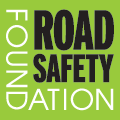BRITISH RESULTS 2004: TRACKING ACCIDENT RATES, ROAD IMPROVEMENTS AND MOTORCYCLE INVOLVEMENT
A new report by the AA Motoring Trust has pinpointed 13 of Britain’s high and mediumhigh risk roads where the contribution to risk from motorcycle accidents is greatest – and the top six are all in the North-west of England.
In addition to the 13, the study has also discovered that on another 149 British roads, at least one third of the fatal and serious accidents involve bikers. In total, 856 inter-urban roads which make up the UK’s primary route network were examined.
Motorcyclists are 30 times more likely to be killed than car drivers, and make up one in six of all road deaths, despite covering only one per cent of all miles travelled. Of the 3,431 people killed on British roads in 2002, 609 were on motorcycles, scooters or mopeds.
Many bikers fall victim to roads they have singled out because they are ‘challenging’ routes, as the list of 13 illustrates – all are popular with bikers, particularly at weekends.
But the study – by the AA Trust-led European Road Assessment Programme (EuroRAP), which rates roads for the risk they represent to their users – shows that many are innocent victims of unforgiving road design, poor road maintenance, or the failure of drivers to ‘think bike’.
Four out of 10 bikers are killed at junctions, most in collisions with cars, and previous studies have shown that in more than half those cases the car driver was at fault. Another four in 10 are killed on bends.
60 per cent of bikers die on roads outside built-up areas, mostly on larger-engined machines. The peak age group for motorcycle deaths is 30-34, but the biggest increase in deaths between 1997 and 2002 was in the 30-49 age group.
John Dawson, Director of the AA Motoring Trust and EuroRAP chairman, says: “No engineering measures will protect the lunatic fringe who treat every winding road as a potential racetrack, and the only way to deal with them is a high level of enforcement. But the actions of this minority should not blind engineers to the measures they could take to improve their roads for the benefit of the sensible majority of motorcyclists.
“Bikers are very vulnerable, and they are grossly over-represented in UK casualty figures. Road engineers have a duty to examine the type of accidents which motorcyclists are having on certain roads, and they should be protected as much as possible, with better junction design, better road surfaces and improved crash barriers. Car drivers need to be constantly reminded to remember to look for motorbikes.”
The study report has also identified 11 roads which over the past six years have persistently presented a higher risk to all their users than they should.
Seven of them are popular motorcycling routes. Among the remaining four is the A59 in North Yorkshire, where half of all casualties happen at junctions, and the A44 between Leominster and Worcester, where a quarter of accidents involve vehicles leaving the road, and more than a quarter involve head-on collisions.
Says John Dawson: “On many roads there are clear pictures from the research which indicate where engineers need to concentrate their resources to reduce the overall accident rate. While some are working hard to do this, in other places we worry that not everything that could be done is being done.
“EuroRAP exists to identify those often innocuous-looking roads that turn out to be persistent killers, and the vast majority of those are not a magnet for bikers.”
